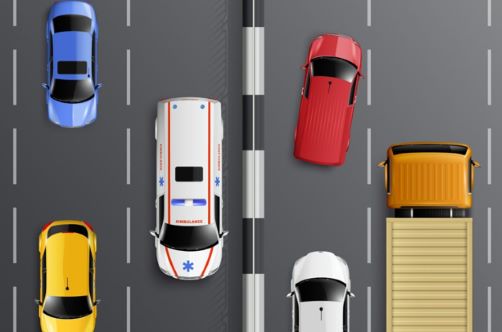

Changing lanes may seem like a simple task, but it can become dangerous if not done correctly. Carelessness in lane-changing is a common cause of road accidents, making it essential to follow proper safety measures.
The reasons for accidents when changing lanes can be many, right from distracted driving to driving under the influence of alcohol. It is important for drivers to not engage in these practices to avoid accidents and ensure the safety of everyone they share the road with.
There are several recommendations that can help drivers reduce the possible dangers. Here are some important tips that ought to be followed when lane changing:
- Always Use Your Turn Signals
- Check Blind Spots
- Adjust Your Mirrors Correctly
- Be Aware of Other Drivers’ Blind Spots
- Avoid Frequent Lane Changes
- Avoid Changing Lanes in the Intersection
1. Always Use Your Turn Signal
Turn signals are one of the most basic yet often neglected parts of driving. Using your turn signal alerts other drivers of your intentions, giving them time to adjust their speed or position. It is advisable to activate your signal 100 feet before making the lane change, thus providing adequate notice.
Tip: Don’t forget to turn off your signals after changing lanes.
2. Check Your Blind Spots
Blind spots are areas around your car that cannot be seen in the mirrors. Depending on your mirrors only to change a lane is precarious because they do not give the whole view. There should be strict head checks or blinds on both sides of the car, especially the one over the shoulder when one intends to switch or change lanes.
Tip: Normalize looking over your shoulders to check for blind spots.
3. Adjust Your Mirrors Correctly
When positioned correctly, mirrors can provide a clearer view of the road. The best practice is to angle your mirrors outwards the areas next to your car that the rearview mirror does not capture.
Tip: Adjust the mirror so that the horizon is slightly at the top of your side mirrors.
4. Be Aware of Other Drivers’ Blind Spots
It is always advisable to pay attention to other drivers’ blind spots and vice versa, as this will help avoid causalities. Do not stay for too long in zones that are shadowed by huge vehicles, such as trucks, as their blind spots are huge when compared to cars.
Tip: Position your side mirrors in a way that allows other drivers to see themselves in your side mirrors. If you can’t see them in your side mirror, chances are they can’t see you either.
5. Avoid Frequent Lane Changes
Lane changing can be reckless at times. For some, it can be frustrating and increases the chances of an error when assessing an opening or blind spot.
Tip: You should decide your lane far before you reach them. Try to stick to your lane as long as possible and switch lanes only when you have a very good reason.
6. Be Cautious in Heavy Traffic
Changing lanes in heavy traffic can be challenging since there is limited space between vehicles. It is advisable to be patient and avoid making aggressive lane changes.
Tip: If the lane you want to join is currently occupied, then wait for a gap in the lane in front of you and give a signal that you intend to switch. Do not push yourself into tight spots.
7. Avoid Changing Lanes at Intersections
It is risky to change lanes while passing through intersections since other drivers too might be turning or merging into your path. It is also illegal to change lanes in the middle of an intersection.Tip: Wait until you’ve cleared the intersection to change lanes. This reduces confusion for other drivers and ensures that you’re changing lanes when the road is safer.


